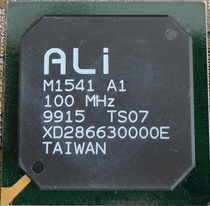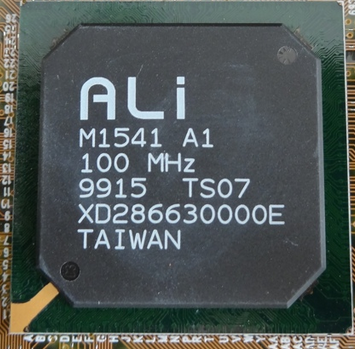 Acer Labs, Inc. (ALi)
Acer Labs, Inc. (ALi)
Acer Laboratories, Inc., are a motherboard chipset manufacturer for PC compatibles. They were founded in 1987 and are a subsidiary of the Acer group. In 2006, the part of ALi that made PC integrated circuits was bought by nVidia for $52 million.
ALI chipsets are highly regarded in the retro PC community for their stability and high performance, usually even put above Intel.
M1101A "Turbo XT" chipset found on numerous late XT-compatible motherboards, including:
|
||||||||||||||||||||||||||||||||||||||||||||||||||||||||||||||||||||||||||||||||||||||||||||||
M1209A Socket 1 / Socket 2 "PC/AT Super-Integration" chipset which supported the VESA local bus. It was designed for use with Intel 80386SX/SLC and AMD Am386SX CPUs. It supported Fast Page Mode (FPM) RAM.
|
||||||||||||||||||||||||||||||||||||||||||||||||||||||||||||||||||||||||||||||||||||||||||||||
M1217
|
||||||||||||||||||||||||||||||||||||||||||||||||||||||||||||||||||||||||||||||||||||||||||||||
M1419An ISA 386 and 486 cache system chipset. Award BIOS Chipset code: 214K6.
|
||||||||||||||||||||||||||||||||||||||||||||||||||||||||||||||||||||||||||||||||||||||||||||||
M1429, M1431 (1994)
|
||||||||||||||||||||||||||||||||||||||||||||||||||||||||||||||||||||||||||||||||||||||||||||||
M1439 / M1445A Socket 3 chipset which was ALI's first to support the PCI 2.0 local bus. Its southbridge chip was the M1445. This chipset was used on the following motherboards: Award BIOS Chipset code: 2A4KC or 2C4KC |
||||||||||||||||||||||||||||||||||||||||||||||||||||||||||||||||||||||||||||||||||||||||||||||
M1489 / M1487
|
||||||||||||||||||||||||||||||||||||||||||||||||||||||||||||||||||||||||||||||||||||||||||||||
ALADDiN III (M1521, M1523)
|
||||||||||||||||||||||||||||||||||||||||||||||||||||||||||||||||||||||||||||||||||||||||||||||
ALADDiN IV / TXPro (M1531 with M1533 or M1543)
It did not include support for AGP. The Aladdin IV chipset boasted a level 2 cache built-in (undocumented in a lot of TXPro motherboards), whose M1531 chip had Tag RAM which existed to reduce cost, and to make the 100 MHz bus speed possible. CPU support included the AMD K5 and K6, Cyrix 6x86 (M1) and 6x86MX (MII), and Intel Pentium and Pentium MMX. The M1533 southbridge provided UDMA-33 support with PIO mode 5/DMA mode 3 to give up to 33.3 MB/s transfer rates. It also provided two USB 1.0 ports. Supported PCI bus speeds are 20, 30 and 33 MHz, while FSB speed options are 50, 60, 66, 75 and 83 MHz. The low cost Aladdin IV chipset can be found in most PC Chips motherboards. A low cost Intel TX imitation. What ALi hoped to accomplish with the TXPro was exactly what the VXPro was intended to do, offer a low cost solution to take a chunk of Intel's sales. With most TXPro-based motherboards offering stable performance at the 75 and 83.3MHz bus speeds, and going for about $60 why wouldn't you want a TXPro motherboard? The chipset itself is quite competitive although I wouldn't compare the scores of a TXPro board to a genuine TX board like the ABIT AX5 or the Shuttle HOT-569, however if you don't need the absolute best of the best, then you may want to consider this chipset. The TXPro is closely based on ALi's Aladdin IV/+ chipset which is amazingly enough (yeah right...) a lot like Intel's TX chipset with a few extra features, hence the name TXPro. One of the major advantages of the TXPro over the Intel TX chipset is the fact that it DOES support ECC DRAM, although it can still only cache the first 64MB of RAM installed when using an 8-bit Tag RAM. Motherboard manufacturers have the option of using an 11-bit Tag RAM to expand the cacheable memory area to 512MB, however doing so does raise the cost...a sacrifice most manufacturers that opt to go with the Aladdin IV won't make. An interesting feature the Aladdin IV boasts, which remains undocumented in most TXPro motherboards, is that the chipset features internal L2 cache Tag bits, therefore reducing cost, and also virtually eliminating any problems you might have experienced with running your motherboard at a higher bus frequency as a direct result of the L2 cache. If you're looking for a cheap motherboard with some advanced features only found in more expensive models, give a TXPro based board a try...but beware, you aren't getting the world's most compatible product when you buy a TXPro board, just a reminder, you get what you pay for in this industry. A later variant of the Aladdin 4 was called the Aladdin 4+, which consisted of the M1531B and M1533B or M1543B chips. The 4+ also seen as Aladdin IV+ went up against Intel's 430TX chipset - both are considered the fastest Super Socket 7 chipsets ever clock-for-clock. The Aladdin IV+ had a better set of features over the Intel. Motherboards that use the Aladdin IV chipset are:
|
||||||||||||||||||||||||||||||||||||||||||||||||||||||||||||||||||||||||||||||||||||||||||||||
ALADDiN V (M1541, M1543/M1543C)
|
||||||||||||||||||||||||||||||||||||||||||||||||||||||||||||||||||||||||||||||||||||||||||||||
| ALi Aladdin V Chipset | ||
| Common Name | Aladdin V | |
| Chipset Packaging | Number of chips | 2 (M1541 & M1543) |
| Packaging Type | 1 x 456-pin BGA (M1541), 1 x 328-pin BGA (M1543) | |
| CPU Support | Number of CPUs | 1 |
| AMD CPUs Supported | K5, K6, K6-3D | |
| Cyrix CPUs Supported | 6x86 (M1), 6x86MX (M2) | |
| Intel CPUs Supported | Pentium, Pentium MMX | |
| Cache | Type | Synchronous Pipeline Burst Cache |
| Maximum Supported Size | 1024KB | |
| Maximum Cacheable DRAM Area | 512MB (10-bit Tag RAM - 512KB L2) 1GB (256KB L2) |
|
| Memory | Maximum DRAM Supported | 1GB (8 RAS Lines) |
| BEDO DRAM Read Timings (66MHz) | N/A | |
| EDO DRAM Read Timings (66MHz) | 5-2-2-2 | |
| FPM DRAM Read Timings (66MHz) | 5-3-3-3 | |
| SDRAM Read Timings (66MHz) | 3-1-1-1 | |
| Data Path to Memory | 64-bits | |
| ECC Support | Yes | |
| Hard Disk Controller | Chip | M1543 |
| Busmastering Support | Yes | |
| UltraDMA Support | Yes | |
| Max. Theoretical Transfer Rate | PIO Mode 5/DMA Mode 3 (33.3MB/S) | |
| PCI Interface | Supported PCI Bus Speeds | 25, 30, 33 MHz |
| Concurrent PCI | Yes | |
| Async. PCI Bus Speed | Yes (Pseudo Synchronous) | |
| PCI Specification | 2.1 (66 MHz max.) | |
| Power Management | PC97 Compliance | Yes |
| Suspend to Disk | Yes | |
| HDD Power Down | Yes | |
| Modem Wakeup | Yes | |
| System Suspend | Yes | |
| Video | AGP Support | Yes |
| Unified Memory Architecture | No | |
| Peripheral Support | USB Support | Yes |
| Plug and Play Port | Yes | |
| Write Buffers | CPU-to-DRAM | 32 QWords |
| CPU-to-PCI | 6 DWords | |
| PCI-to-DRAM | 48 DWords | |
| Officially Supported Bus Speeds | 50, 60, 66, 75, 83, 100 MHz | |
| Unofficially Achieved Bus Speeds | Unknown | |
ALADDiN 7 (M1561, M1535D)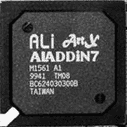
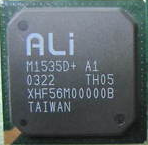
The last of the Pentium / Super Socket 7 PCI chipsets from ALi was the Aladdin 7, which consisted of the M1561 northbridge and M1535D southbridge.
Aladdin 7 did not support AGP.
The M1535D southbridge provided supported for UDMA-33 and UDMA-66. Four USB 1.0 ports were also included, plus AC'97 v2.1 integrated audio.
The ALi Aladdin 7 found its way onto very few motherboards, had buggy AGP support and didn’t have any good BIOS support.
ALADDiN PRO II (M1621, M1543/M1543C)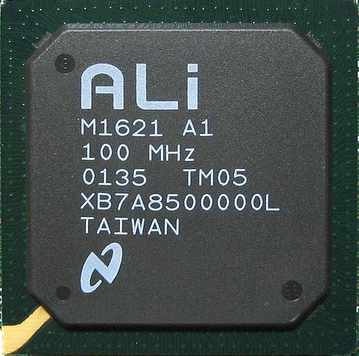

A chipset launched in 1997, and designed for Intel's new Pentium II, the Aladdin Pro II was the first Slot 1 chipset from ALi. It supported FSB speeds of either 66 or 100 MHz with memory running at the same frequency. Maximum memory support was 2 GB. This chipset had no integrated graphics processor (IGP).
The M1621 supported the PCI graphics bus at 66 MHz, as well as AGP 1x / 2x modes.
The M1543 southbridge provided UDMA-33 and UDMA-66 support, plus two USB 1.0 ports. The M1543C was identical but provided three USB 1.0 ports instead of two.
ALADDiN TNT (M1631, M1535/M1535D)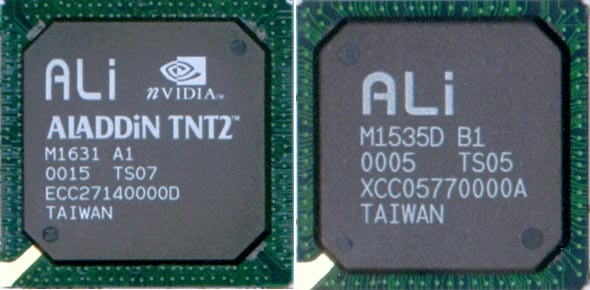
A PCI 2.2 chipset designed for Pentium II, Pentium III and Celeron CPUs, it had nVidia TNT2 integrated graphics, and supported FSB speeds up to 133 MHz. It also supported AGP 2x and maximum memory of 1.5 GB.
The M1535D southbridge provided supported for UDMA-33 and UDMA-66. Four USB 1.0 ports were also included, plus AC'97 v2.1 integrated audio.
ALADDiN Pro 4 (M1641, M1535/M1535D)
The first PCI chipset designed for Pentium II, Pentium III and Celeron CPUs that supported AGP 4x. It had no integrated graphics. Memory bus speeds remained as before (66 - 133 MHz), the same as the FSB.
ALADDiN Pro 5 (M1651, M1535D+)
A PCI 2.2 chipset designed for Pentium II, Pentium III and Celeron CPUs, it had no integrated graphics, but did support AGP 4x like the Pro 4. Maximum memory was now 3 GB, but memory speeds could be as high as 266 MHz if DDR memory was used (if not, the memory would run at the same speed as the FSB).
A variant of the Aladdin Pro 5 that supported the PIII "Tualatin" was released, called the Aladdin Pro 5T. This used a M1651T northbridge.
The M1535D+ southbridge provided supported for UDMA-100 for the first time. Six USB 1.1 ports were also included, plus AC'97 v2.1 integrated audio.
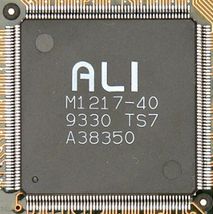
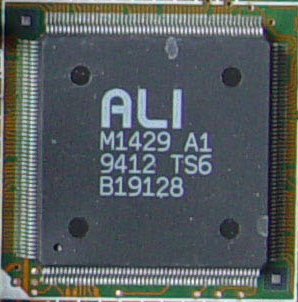
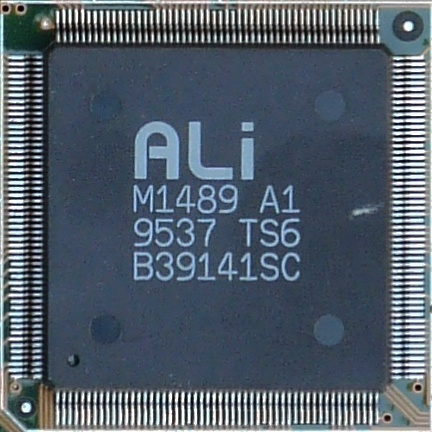
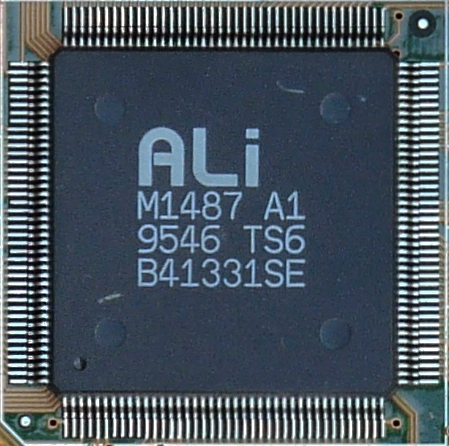
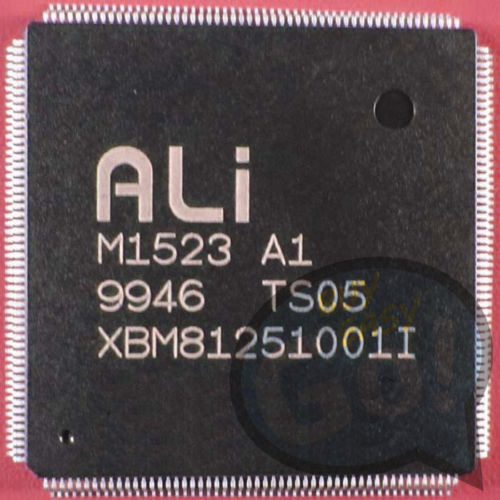
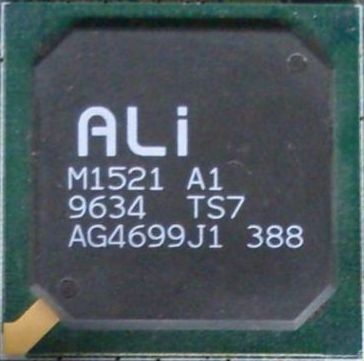
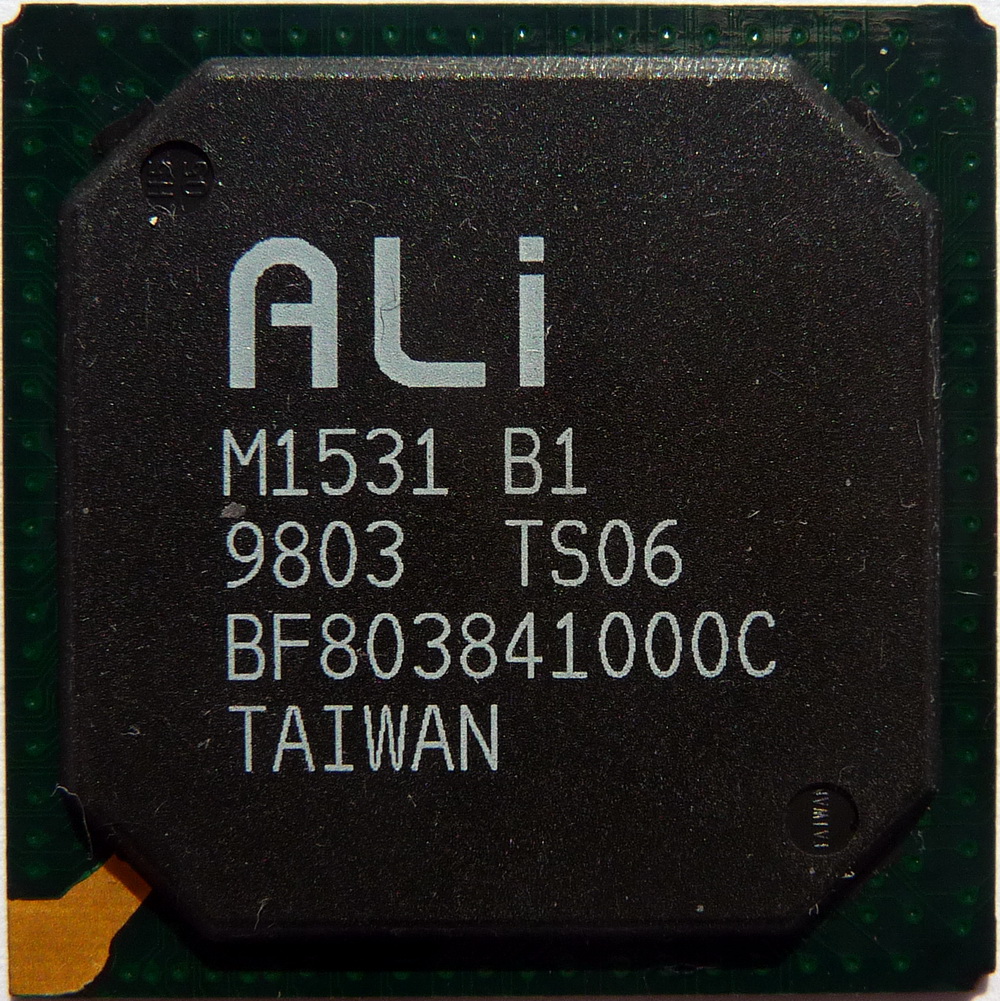
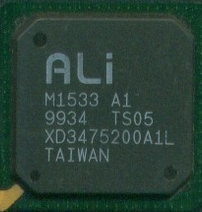 Still on the
Still on the 